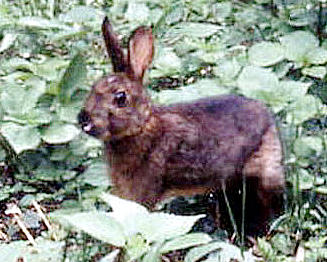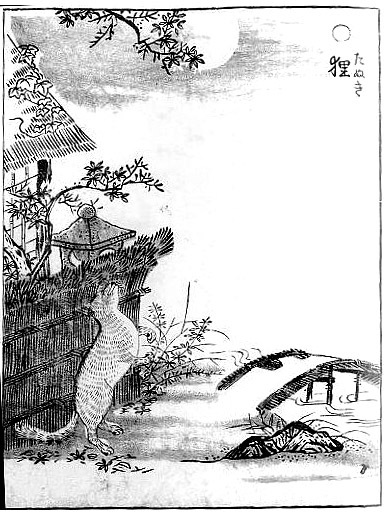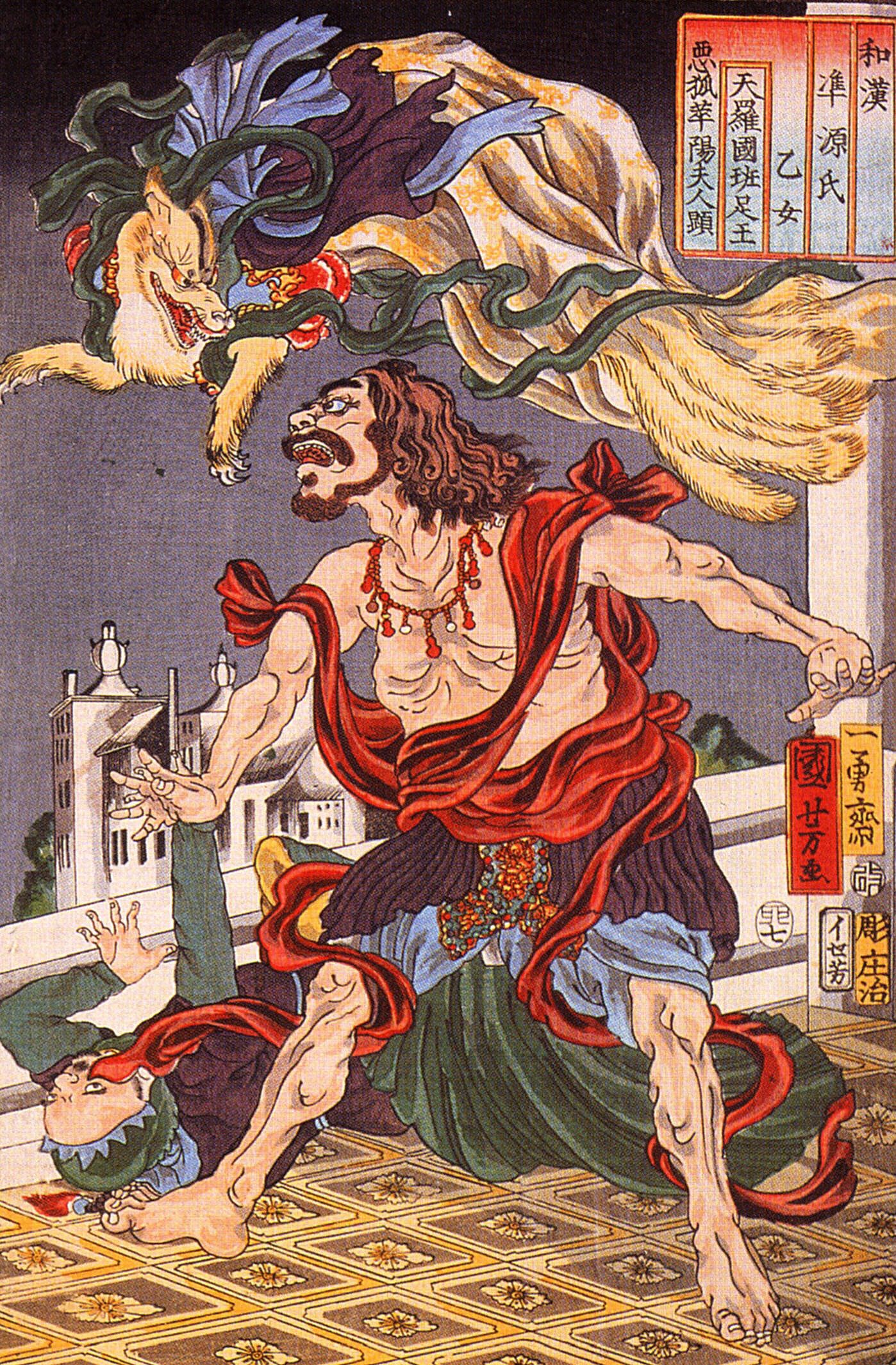|
Japanese Marten
The Japanese marten (''Martes melampus'') is a marten species endemic to Japan. Description It is in length typically, not counting a long tail, and between in weight. Males are generally larger than females. The pelage varies in color from dark brown to dull yellow with a cream-colored throat. Diet and behavior Both males and females are territorial, and the size of each individual's territory depending on food availability. The Japanese marten is omnivorous, preferring meat from fish, frogs, and small birds and mammals, but consuming insects, fruit, and seeds when necessary. Taxonomy The two confirmed subspecies of Japanese marten are: * ''M. m. melampus'' lives on several of the Japanese islands. * ''M. m. tsuensis'' is endemic to Tsushima Island. It is most closely related to the sable (''M. zibellina''), with which it is sympatric on Hokkaido. Distribution The Japanese marten's presence on Hokkaido and Sado islands are due to introductions. It has been recorded i ... [...More Info...] [...Related Items...] OR: [Wikipedia] [Google] [Baidu] |
National Museum Of Nature And Science
The is in the northeast corner of Ueno Park in Tokyo. The museum has exhibitions on pre- Meiji science in Japan. It is the venue of the taxidermied bodies of the legendary dogs Hachikō and Taro and Jiro. A life-size blue whale model and a steam locomotive are also on display outside. History Blue whale Life size model. Opened in 1871, it has had several names, including Ministry of Education Museum, Tokyo Museum, Tokyo Science Museum, the National Science Museum of Japan, and the National Museum of Nature and Science as of 2007. It was renovated in the 1990s and 2000s, and offers a wide variety of natural history exhibitions and interactive scientific experiences. It was completed as the main building of the Tokyo Science Museum in September 1931 as part of the reconstruction project after the Great Kanto Earthquake. Neo-Renaissance style. Designed by Kenzo Akitani, an engineer of the Ministry of Education, Culture, Sports, Science and Technology, Building Division. The b ... [...More Info...] [...Related Items...] OR: [Wikipedia] [Google] [Baidu] |
Japanese Hare
The Japanese hare (''Lepus brachyurus'') is a species of hare endemic to Japan. In Japanese, it is called the ''Nousagi'' (Japanese: 野兎), meaning "field rabbit". Taxonomy Coenraad Jacob Temminck described the Japanese hare in 1845. The specific epithet (''brachyurus'') is derived from the Ancient Greek ''brachys'' meaning "short" and ''oura'' meaning "tail". The four subspecies of this hare are: *''L. b. angustidens'' *''L. b. brachyurus'' *''L. b. lyoni'' *''L. b. okiensis'' Description The Japanese hare is reddish-brown, with a body length that ranges from , and a body weight of . Its tail grows to lengths of . Its front legs can be from long and the back legs from long. The ears grow to be long, and the tail long. In areas of northern Japan, the west coast, and the island of Sado, where snowfall is heavy, the Japanese hare loses its coloration in the autumn, remaining white until the spring, when the reddish-brown fur returns. Habitat The Japanese hare is found acros ... [...More Info...] [...Related Items...] OR: [Wikipedia] [Google] [Baidu] |
Gazu Hyakki Yagyō
is the first book of Japanese artist Toriyama Sekien's famous ''Gazu Hyakki Yagyō'' e-hon tetralogy, published in 1776. A version of the tetralogy translated and annotated in English was published in 2016. Although the title translates to "The Illustrated Night Parade of a Hundred Demons", it is based on an idiom, ''hyakki yagyō,'' that is akin to pandemonium in English and implies an uncountable horde. The book is followed by '' Konjaku Gazu Zoku Hyakki'', ''Konjaku Hyakki Shūi'', and ''Gazu Hyakki Tsurezure Bukuro''. The book is a supernatural bestiary, a collection of ghosts, spirits, spooks and monsters from literature, folklore, and other artwork. The art of ''Gazu Hyakki Yagyō'' heavily references a 1737 scroll-painting called the ''Hyakkai Zukan'' by artist Sawaki Sūshi; Sekien's innovation was preparing the illustrations as woodblock prints that could be mass-produced in a bound book format. Intended as a parody of then-popular reference books such as the ''Wakan Sa ... [...More Info...] [...Related Items...] OR: [Wikipedia] [Google] [Baidu] |
Yōkai
are a class of supernatural entities and spirits in Japanese folklore. The word is composed of the kanji for "attractive; calamity" and "apparition; mystery; suspicious." are also referred to as , or . Despite often being translated as such, are not literally demons in the Western sense of the word, but are instead spirits and entities. Their behavior can range from malevolent or mischievous to benevolent to humans. often have animal features (such as the , depicted as appearing similar to a turtle, and the , commonly depicted with wings), but may also appear humanoid in appearance, such as the . Some resemble inanimate objects (such as the ), while others have no discernible shape. are typically described as having spiritual or supernatural abilities, with shapeshifting being the most common trait associated with them. that shapeshift are known as or . Japanese folklorists and historians explain as personifications of "supernatural or unaccountable phenomena to t ... [...More Info...] [...Related Items...] OR: [Wikipedia] [Google] [Baidu] |
Fukushima Prefecture
Fukushima Prefecture (; ja, 福島県, Fukushima-ken, ) is a prefecture of Japan located in the Tōhoku region of Honshu. Fukushima Prefecture has a population of 1,810,286 () and has a geographic area of . Fukushima Prefecture borders Miyagi Prefecture and Yamagata Prefecture to the north, Niigata Prefecture to the west, Gunma Prefecture to the southwest, and Tochigi Prefecture and Ibaraki Prefecture to the south. Fukushima is the capital and Iwaki is the largest city of Fukushima Prefecture, with other major cities including Kōriyama, Aizuwakamatsu, and Sukagawa. Fukushima Prefecture is located on Japan's eastern Pacific coast at the southernmost part of the Tōhoku region, and is home to Lake Inawashiro, the fourth-largest lake in Japan. Fukushima Prefecture is the third-largest prefecture of Japan (after Hokkaido and Iwate Prefecture) and divided by mountain ranges into the three regions of Aizu, Nakadōri, and Hamadōri. History Prehistory The keyhole-shape ... [...More Info...] [...Related Items...] OR: [Wikipedia] [Google] [Baidu] |
Hiroshima Prefecture
is a prefecture of Japan located in the Chūgoku region of Honshu. Hiroshima Prefecture has a population of 2,811,410 (1 June 2019) and has a geographic area of 8,479 km² (3,274 sq mi). Hiroshima Prefecture borders Okayama Prefecture to the east, Tottori Prefecture to the northeast, Shimane Prefecture to the north, and Yamaguchi Prefecture to the southwest. Hiroshima is the capital and largest city of Hiroshima Prefecture, and the largest city in the Chūgoku region, with other major cities including Fukuyama, Kure, and Higashihiroshima. Hiroshima Prefecture is located on the Seto Inland Sea across from the island of Shikoku, and is bounded to the north by the Chūgoku Mountains. Hiroshima Prefecture is one of the three prefectures of Japan with more than one UNESCO World Heritage Site. History The area around Hiroshima was formerly divided into Bingo Province and Aki Province. This location has been a center of trade and culture since the beginning of Japan's record ... [...More Info...] [...Related Items...] OR: [Wikipedia] [Google] [Baidu] |
Ishikawa Prefecture
is a prefecture of Japan located in the Chūbu region of Honshu island. Ishikawa Prefecture has a population of 1,140,573 (31 October 2019) and has a geographic area of 4,186 km2 (1,616 sq mi). Ishikawa Prefecture borders Toyama Prefecture to the east, Gifu Prefecture to the southeast, and Fukui Prefecture to the south. Kanazawa is the capital and largest city of Ishikawa Prefecture, with other major cities including Hakusan, Komatsu, and Kaga. Ishikawa is located on the Sea of Japan coast and features the most of the Noto Peninsula which forms Toyama Bay, one of the largest bays in Japan. Ishikawa Prefecture is part of the historic Hokuriku region and formerly an important populated center that contained some of the wealthiest '' han'' (domains) of the Japanese feudal era. Ishikawa Prefecture is home to Kanazawa Castle, Kenroku-en one of the Three Great Gardens of Japan, Nyotaimori ("body sushi"), and Kutani ware. History Ishikawa was formed in 1872 from the me ... [...More Info...] [...Related Items...] OR: [Wikipedia] [Google] [Baidu] |
Akita Prefecture
is a prefecture of Japan located in the Tōhoku region of Honshu.Nussbaum, Louis-Frédéric. (2005). "Provinces and prefectures" in ; "Tōhoku" in . Its population is approximately 966,000 (as of 1 October 2019) and its geographic area is 11,637 km2 (4,493 sq mi). Akita Prefecture is bordered by Aomori Prefecture to the north, Iwate Prefecture to the east, Miyagi Prefecture to the southeast, and Yamagata Prefecture to the south. Akita is the capital and largest city of Akita Prefecture. Other major cities include Yokote, Daisen, and Yurihonjō. Akita Prefecture is located on the coast of the Sea of Japan and extends east to the Ōu Mountains, the longest mountain range in Japan, at the border with Iwate Prefecture. Akita Prefecture formed the northern half of the historic Dewa Province with Yamagata Prefecture. History The region of Akita was created from the ancient provinces of Dewa and Mutsu. Separated from the principal Japanese centres of commerce, politics, ... [...More Info...] [...Related Items...] OR: [Wikipedia] [Google] [Baidu] |
Bake-danuki
''Bake-danuki'' () are a kind of '' yōkai'' (supernatural beings) found in the classics and in the folklore and legends of various places in Japan, commonly associated with the Japanese raccoon dog or ''tanuki''. Although the ''tanuki'' is a real, extant animal, the ''bake-danuki'' that appears in literature has always been depicted as a strange, even supernatural animal. The earliest appearance of the ''bake-danuki'' in literature, in the chapter about Empress Suiko in the '' Nihon Shoki'' written during the Nara period, there are such passages as "in two months of spring, there are tanuki in the country of Mutsu (), they turn into humans and sing songs ()." Bake-danuki subsequently appear in such classics as the Nihon Ryōiki and the Uji Shūi Monogatari. In some regions of Japan, ''bake-danuki'' are reputed to have abilities similar to those attributed to ''kitsune'' (foxes): they can shapeshift into other things or people, and can possess human beings. Many legends of ''t ... [...More Info...] [...Related Items...] OR: [Wikipedia] [Google] [Baidu] |
Kitsune
In Japanese folklore, , are foxes that possess paranormal abilities that increase as they get older and wiser. According to '' yōkai'' folklore, all foxes have the ability to shapeshift into human form. While some folktales speak of employing this ability to trick others—as foxes in folklore often do—other stories portray them as faithful guardians, friends, and lovers. Foxes and humans lived close together in ancient Japan; this companionship gave rise to legends about the creatures. have become closely associated with Inari, a Shinto or spirit, and serve as its messengers. This role has reinforced the fox's supernatural significance. The more tails a has—they may have as many as nine—the older, wiser, and more powerful it is. Because of their potential power and influence, some people make sacrifices to them as to a deity. Conversely foxes were often seen as " witch animals", especially during the Edo period (1603–1867), and were thought of as goblins who co ... [...More Info...] [...Related Items...] OR: [Wikipedia] [Google] [Baidu] |
Mie Prefecture
is a prefecture of Japan located in the Kansai region of Honshu. Mie Prefecture has a population of 1,781,948 () and has a geographic area of . Mie Prefecture is bordered by Gifu Prefecture to the north, Shiga Prefecture and Kyoto Prefecture to the northwest, Nara Prefecture to the west, Wakayama Prefecture to the southwest, and Aichi Prefecture to the east. Tsu is the capital and Yokkaichi is the largest city of Mie Prefecture, with other major cities including Suzuka, Matsusaka, Ise, and Kuwana. Mie Prefecture is located on the eastern coast of the Kii Peninsula, forming the western side of Ise Bay which features the mouths of the Kiso Three Rivers. Mie Prefecture is a popular tourism destination home to Nagashima Spa Land, Suzuka International Racing Course, and some of the oldest and holiest sites in Shinto, the traditional religion of Japan, including the Ise Grand Shrine and the Tsubaki Grand Shrine. History Until the Meiji Restoration, the area tha ... [...More Info...] [...Related Items...] OR: [Wikipedia] [Google] [Baidu] |
Iga, Mie
is a city located in Mie Prefecture, Japan. , the city had an estimated population of 88,895 in 40,620 households and a population density of 160 persons per km². The total area of the city is . Geography Iga is located in northwestern Mie Prefecture. The northeastern part of the city is in the Suzuka Mountains, and the northwestern part is in the Shigaraki Plateau. The southwestern of the city is the Yamato Highlands, and the southeastern portion is a basin surrounded by the Nunobiki Mountains. The area is very hilly. Since it is on the upper reaches of the Kizu River, which belongs to the Yodo River system, and borders on Shiga, Nara, and Kyoto prefectures, although Mie prefecture is classified as part of the Tōkai region, the Iga region, including Nabari city, is designated as part of the Kansai region. Neighboring municipalities Mie Prefecture * Kameyama * Tsu * Nabari Shiga Prefecture * Kōka Kyoto Prefecture * Minamiyamashiro Nara Prefecture * Nara * Yamazoe ... [...More Info...] [...Related Items...] OR: [Wikipedia] [Google] [Baidu] |







